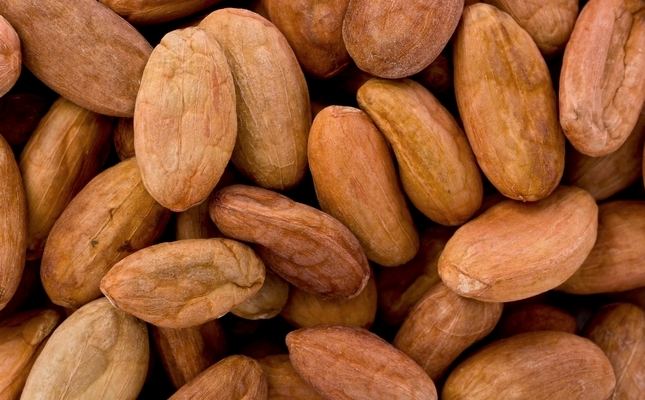[fshow photosetid=72157629856979222]
Mexico’s love affair with chocolate dates back to early civilization, and is still a staple of many Mexican dishes. The Mayan people began cultivating cacao in the region more than 3,000 years ago and when the Spanish arrived in the 1500s, Aztec rulers were already drinking an unsweetened chocolate drink from golden chalices.
The Spanish added sugar, which caught on in the New World, but milk wasn’t added until later, and even now, most Mexican hot chocolate is still made with water.
Instead of sweetening with sugar, Mexican chocolate is frequently spiced with cinnamon and almonds, and sometimes with vanilla. From morning until evening, a visit to Mexico can be a chocolate-lovers paradise. Be forewarned, though, this is (probably) not the chocolate you are used to. Mexican chocolate has a grittier, drier consistency than European chocolate, because it is made simply by grinding cacao beans with little to no added fats. Some people find it chalky, but really it is simply a different kind of texture. Those addicted to processed candy might be a bit put off, but people who love the true flavor of chocolate will be pleased, since the less-refined Mexican version actually tastes more natural.
Oaxacan wonderland
Chocolate can be found all across Mexico, but even Mexicans recommend you try it in the city of Oaxaca, which is located between the largest chocolate-producing regions of Tabasco and Chiapas. In the countryside around Oaxaca, women still prepare drinking chocolate by hand, literally grinding down cacao beans with stone rolling pins. If you don’t feel like knocking on strangers’ doors in the middle of the Mexican countryside, never fear. Mayordomo, one of Mexico’s largest chocolate producers, has a store in Oaxaca right by the entrance to the Juarez market. Stepping inside the clean, friendly showroom is a sensory experience in itself as the place is awash with the fragrance of chocolate. You can also watch it being prepared and taste it for yourself. Make sure you pick up some of the packaged product to take home with you. It comes in the traditional round packets, which you can use to make your own hot chocolate or eat plain.
If you have time you can even make a day of it and go to Chocolates La Soledad, too. This smaller establishment offers a range of tastings, and you can even have your own blend of spices added to a batch. Can’t get enough of the smell of chocolate? The owner of La Soledad also runs a hotel, where you can bask in the aroma day and night.
Around Oaxaca
Other than chocolate, Oaxaca is also a cultural gem. The Plaza de la Constitución or Zocalo is the city centre and also hosts a statue of Benito Juarez, Oaxaca’s most famous son. If you’re lucky, you can also catch a local Mariachi band playing in the kiosk at the middle of the plaza.
Juarez Market is just off the plaza, a large, bustling market (closed on Mondays) with two floors of everything you can imagine, filling an entire city block. It’s the perfect spot to pick up souvenirs, from jewelry to mescal to fruit.
Speaking of mescal, Oaxaca is the place to try this most Mexican of liquors. A smokier cousin of tequila, also made from agave, mescal can be found anywhere alcohol is sold and served and is a regional specialty. Oaxaca is also considered a culinary capital. Not only for its chocolate and mescal, but also cheese. Oaxacan cheese is a semi-soft cow’s milk cheese – its mild flavor is delicious on its own, but also look for it melted on pretty much anything.
¡Calienté!
You don’t need a sweet tooth to indulge in Mexico’s chocolate heritage. One of the country’s most delicious dishes is molé, a rich, spicy, unsweetened chocolate sauce. Meat (frequently chicken or shrimp) is simmered in the sauce until it is tender. Without sugar, the full flavor of the chocolate shines, but the cayenne pepper offsets any bitterness. Served with rice and tortillas, molé is a can’t-miss stop on your culinary tour of the country and Oaxaca is known as the Land of the Seven Molés. If your tastes trend toward the very spicy try the rojo, the nutty vesion is almendrado, light green and flavored with almonds, or the sweet dish is called manchamentel and sweetened with fruits.
Enjoy original Mexican chocolate at home:
- Mexican-style or “stone ground” chocolate, in the parlance of today’s gourmet scene, has enjoyed growing popularity in the past few years. No longer relegated to only “hecho en México”, you can now find it on sale around the world.
- After years of appearing at L.A. farmers’ markets, Chocovivo opened a flagship store in Venice Beach, California in 2011. Ground from beans sourced from Tabasco, Mexico, this chocolate has no processed ingredients and is available in a variety of seasonal flavors.
- In Tecumseh, Michigan, Peppalo Stone Ground Chocolate was also launched in 2011. With single-source beans from Costa Rica, these small-batch chocolate bars are even packaged by hand.
- Taza Chocolate is one of the older, more established stone-ground brands. Launched in 2006, Taza focuses on socially responsible production, and its chocolate is available in much of the U.S., Canada, the UK, the Netherlands, Germany, Sweden and Norway.

